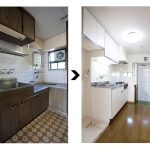If you have heavy-duty web equipment, you will require a web tension controller. Without it, you will impede your company’s ability to produce quality products with any consistency. The tension directly affects the behavior of the web as it moves from one zone into another during the production process. If the tension is too tight or loose, the material will emerge at the end of the line with wrinkles or other defects. Keeping control of the tension from start to finish is, therefore, an essential component of web manufacturing process.
Basic Types
Mechanical tension controllers were the original means of maintaining the proper amount of tension. Today, with automation incorporated in most production systems, tension controllers are now an integrated component of the processing system. Suppliers now consider them as one of two basic types. They are either:
- Open Loop: This requires the installation of a device to measure the tension. It may be as simple as a tension transducer. A display or meter makes the reading of the tension measurements readily accessible to the operator. The operator can then adjust the device manually to ensure it matches the specifications.
- Closed-Loop: This involves using an automatic controller to measure the tension. It accomplishes this quickly and accurately many times per second. This automatic tension controller sends this signal, which, in turn, to the device and an error signal is set matching the pre-decided and fed error designation.
No matter what type your company decides upon, installing one of these devices is essential if you want to take control of the tension factor in your production process
Tension Controller: Decreasing Tension Variation
By installing a web tension controller, your company can decrease tension variation considerably. The result is a more consistent production system with a significant decrease in defects and lost material. This will help improve your company’s bottom-line and make it easier for you to compete in the global marketplace.







